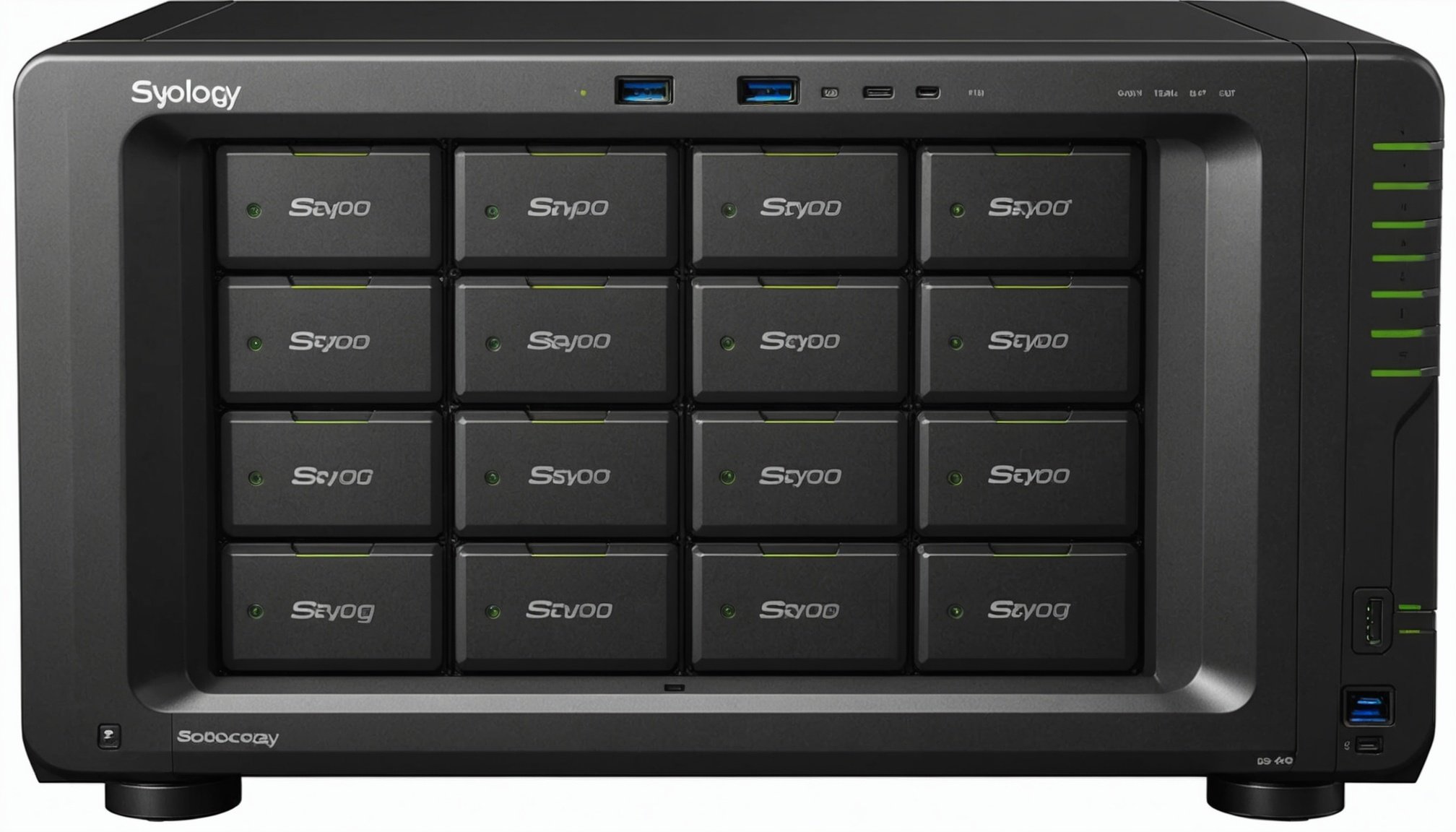Step-by-Step Guide to Setting Up and Optimizing a RAID 5 Array on Your Synology DS920+ for Superior Performance
Understanding RAID 5 and Its Benefits
Before we dive into the setup process, it’s essential to understand what RAID 5 is and why it’s a popular choice for many users. RAID 5, or Redundant Array of Independent Disks 5, is a data storage scheme that combines multiple physical disks into a single logical unit. This configuration provides a balance between storage capacity, data safety, and performance.
RAID 5 uses block-level striping with distributed parity, meaning that data is spread across multiple drives, and parity information is also distributed across the drives. This setup allows for a single drive failure without losing data, making it an excellent option for those who need both redundancy and performance.
Have you seen this : A Comprehensive Guide to Installing and Configuring Extra RAM in Your Lenovo ThinkStation P620
Preparing Your Synology DS920+
Choosing the Right Hard Drives
When setting up a RAID 5 array on your Synology DS920+, selecting the right hard drives is crucial. For optimal performance and reliability, you should opt for NAS-specific hard drives. Drives like the Toshiba N300 or the Western Digital Red series are designed for 24/7 operation and offer high reliability and performance.
Here are some key features to look for in NAS hard drives:
Also to read : How to Install and Set Up an External GPU on Your Dell XPS 13 for Enhanced Graphics Power
- High Reliability: Look for drives with high MTTF (Mean Time To Failure) ratings and workload capacities. For example, the Toshiba N300 has a workload rate of up to 180 TB per year and an MTTF of up to 1.2 million hours[3].
- Performance: Drives with high rotational speeds (e.g., 7200 RPM) and large cache sizes (e.g., up to 512 MB) will provide better data transfer speeds.
- Noise Level: If you plan to use your NAS in a home environment, consider drives with lower noise levels, such as the WD Red series[5].
Installing the Hard Drives
Installing the hard drives into your Synology DS920+ is a straightforward process:
- Unpack and Prepare: Unpack your hard drives and ensure they are compatible with your NAS device.
- Install Drives: Insert the hard drives into the drive bays of your Synology DS920+. Make sure they are securely locked into place.
- Connect Power and Data Cables: Connect the power and SATA cables to the drives and the NAS device.
Setting Up the RAID 5 Array
Initial Setup of Your Synology NAS
Before creating the RAID array, you need to set up your Synology NAS:
- Connect the NAS to Your Network: Connect your Synology DS920+ to your network using an Ethernet cable.
- Power On the NAS: Turn on the NAS and wait for it to boot up.
- Access the Web Interface: Open a web browser and navigate to
find.synology.comto locate your NAS on the network. Follow the on-screen instructions to complete the initial setup, including setting up the administrator account and configuring the network settings[1].
Creating the RAID 5 Array
Once your NAS is set up, you can create the RAID 5 array:
- Log In to DSM: Log in to the Synology DiskStation Manager (DSM) interface.
- Go to Storage Manager: Navigate to the Storage Manager section.
- Create a New Volume: Select the option to create a new volume and choose RAID 5 as the configuration.
- Select Drives: Select the hard drives you installed earlier to be part of the RAID 5 array.
- Configure Volume Size: Configure the volume size and other settings as per your requirements.
- Apply Changes: Apply the changes and wait for the RAID array to be created.
Here is a detailed list of steps to create a RAID 5 array on your Synology DS920+:
- Log in to DSM: Access the DSM interface through your web browser.
- Navigate to Storage Manager: Go to the Storage Manager section under the Control Panel.
- Select Disk Group: Create a new disk group or select an existing one.
- Choose RAID Type: Select RAID 5 as the RAID type.
- Add Drives: Add the hard drives you want to include in the RAID array.
- Configure Settings: Configure the volume size, file system, and other settings.
- Apply and Wait: Apply the changes and wait for the RAID array to be created.
Optimizing Your RAID 5 Array for Performance
Using SSD Cache
One way to significantly boost the performance of your RAID 5 array is by using an SSD cache. Synology supports SSD caching, which can enhance read and write speeds:
- Install SSDs: Install one or more SSDs into the available drive bays or use SSD slots if your NAS model supports them.
- Enable SSD Cache: Go to the Storage Manager in DSM, select the volume you created, and enable SSD cache.
- Configure Cache Settings: Configure the cache settings to optimize for your usage patterns.
Upgrading Network Connectivity
To fully utilize the potential of your RAID 5 array, ensure your network connectivity is optimized:
- 10GbE Upgrade: If your NAS supports it, consider upgrading to a 10GbE network interface for faster data transfer speeds.
- Use Gigabit or Faster Connections: Ensure all devices accessing the NAS are connected via gigabit or faster Ethernet connections.
Monitoring and Maintaining Your NAS
Regular monitoring and maintenance are crucial for optimal performance and data safety:
- System Monitoring: Use the DSM interface to monitor system health, including drive status, network connectivity, and resource usage.
- Regular Backups: Set up regular backups using Synology’s Active Backup packages to ensure your data is safe in case of any failures.
- Firmware Updates: Keep your DSM and drive firmware up to date to ensure you have the latest features and security patches.
Practical Insights and Actionable Advice
Balancing Capacity and Redundancy
When setting up a RAID 5 array, it’s important to balance storage capacity and redundancy. Here’s a comparison of different RAID configurations:
| RAID Type | Description | Capacity Usage | Redundancy |
|---|---|---|---|
| RAID 0 | Striping | Maximum capacity, no redundancy | None |
| RAID 1 | Mirroring | 50% capacity, full redundancy | Full |
| RAID 5 | Striping with parity | High capacity, single drive redundancy | Single drive |
| RAID 6 | Striping with double parity | Medium capacity, two drive redundancy | Two drives |
For a 4-bay NAS like the Synology DS920+, RAID 5 is often the best choice as it offers a good balance between capacity and redundancy.
Example Configuration
Here’s an example configuration for a Synology DS920+ with four 14TB Western Digital hard drives:
| Drive Capacity | RAID Type | Total Capacity | Redundancy |
|---|---|---|---|
| 4 x 14TB | RAID 5 | 42TB | Single drive |
This configuration provides 42TB of usable storage with the ability to withstand a single drive failure.
Setting up and optimizing a RAID 5 array on your Synology DS920+ is a straightforward process that can significantly enhance your data storage and retrieval performance. By choosing the right hard drives, configuring the RAID array correctly, and optimizing your setup with SSD caching and upgraded network connectivity, you can ensure superior performance and data safety.
As Jan Root, a Synology user, noted, “The key to a successful NAS setup is not just about the hardware, but also about how you configure and maintain it. With the right setup, my Synology DS920+ has been a rock-solid solution for all my storage needs.”
By following this guide, you can create a robust and high-performance storage solution that meets your needs, whether you’re a home user or a small business owner. Remember to always monitor and maintain your NAS to ensure it continues to perform optimally over time.











